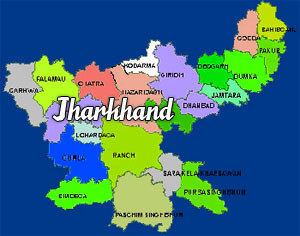The lost case of witches
 Premlata, 40, was branded a witch in 2004 because of her refusal to sleep with some influential people in her village in Jharkhand. She fled to Chhutni Mahtain, 50, an alleged witch who turned crusader against witch-hunt. Chhutni helped her fight back and Premlata is now living with her family with no slur to her name.
Premlata, 40, was branded a witch in 2004 because of her refusal to sleep with some influential people in her village in Jharkhand. She fled to Chhutni Mahtain, 50, an alleged witch who turned crusader against witch-hunt. Chhutni helped her fight back and Premlata is now living with her family with no slur to her name.
In November 2008, a group of middle-aged people attacked Jonga Kui, 32, with weapons after an ojha (traditional healer) accused her of killing ‘innocent’ people in her village through black magic. Chhutni stepped in and forced the police, unwilling to meddle in the ‘community affairs’, lodge a case against the accused. The guilty are now requesting Jonga to make a compromise.
Witches are supposed to have supernatural power whose uses can be malevolent or benevolent. And in India women who fall foul of the moral majority are branded witches and persecuted physically and psychologically. Earlier, the problem was there among tribals and dalits, but in the last few decades it has spread to several other castes and communities. The practice finds mention in the Vedas, first compiled around 1500 B. C.
The efforts of non-government organisations (NGOs) in Jharkhand are proving not enough to stop the practice of witch-hunt, which has religious, social and political sanction.
An NGO called Free Legal Aid Committee (FLAC) took the initiative to bring in the legislation Prevention of Witchcraft Act in 1999 in Bihar (before Jharkhand was born).
According to an FLAC report, 2,556 women were branded witches and killed in India from 1987 to 2003, of whom around 1,000 were in Bihar and Jharkhand alone. FLAC president Premchand, who goes by one name, said the figures were merely 10 per cent of the total.
“In several states a case of witch-hunt is recorded as ordinary criminal offence. No government accepts that such a practice still exists.”
The country has no central law to check witch-hunt though Bihar, Jharkhand, and Chhattisgarh have legislation to check the menace.
In Rajasthan, a draft bill submitted by the state commission for women to the government is under consideration.
“The existing laws are very weak,” said Manju Hembrom, member of the National Commission for Women, adding the body has sent a draft of the amended law to the Union ministry of women and child development.
Girija Shankar Jaiswal, a lawyer who has spent more than 20 years studying witch-hunt cases in Bihar and Jharkhand, said there were four categories of people behind witch-hunt — people who brand a woman a witch, the second instigates the crime against the alleged witch in whatever manner, the third commits the offence, and the fourth is the ojha (traditional healer), who confirms that the woman concerned is a “witch”.
In Jharkhand and Bihar, the crime enjoys social and political patronage. “There is as much faith in witch-hunt as there is belief in gods in several parts of Bihar and Jharkhand,” said Saryu Roy, a BJP MLA from Jharkhand.
Shamsad Khan, founder secretary of Lucknow-based Centre for Rural Education and Development Action (CREDA), says in Mirzapur and some other eastern Uttar Pradesh districts the police do not register cases of women branded witches; hence there are no statistics relating to the crime. Shukla Mohanty, historian and principal of Jamshedpur Women’s College, said she had submitted a proposal to her institution’s academic council for including witch-hunt in the curriculum of history and political science.
Back in her thatched hutment at Seraikela village, 200 km west of Ranchi, Chhutni, who is now a housewife, pledges to continue protecting her “hapless sisters” branded witches.